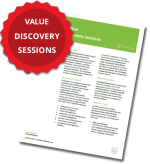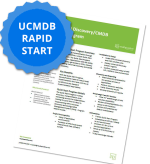ServiceNow SPM Implementation Best Practices: A Phased Approach to Success
ServiceNow Strategic Portfolio Management (SPM) is a powerful tool that helps organizations align projects with business goals, streamline operations, and maximize efficiency. However, implementing SPM without a clear strategy can lead to challenges like delayed projects, misaligned priorities, or wasted resources. That’s why ServiceNow SPM Implementation Best Practices are essential for success.
In this blog post, we’ll walk you through a proven, phased approach to implementing ServiceNow SPM. Whether you’re a project manager aiming for faster delivery, an IT service manager integrating SPM with existing tools, a business analyst optimizing processes, or an executive focused on ROI, this guide offers actionable insights to help you succeed.

1. Planning for SPM Implementation
The cornerstone of any successful ServiceNow SPM implementation is thorough planning. Skipping or rushing this phase can lead to costly missteps, such as solutions that don’t address real needs or stakeholder resistance that derails adoption. Here’s how to set the stage for success:
Assessment: Understanding Your Starting Point
Begin by conducting a detailed assessment of your organization’s current project and portfolio management maturity. Key questions to ask include:
-
Are we relying on outdated tools like spreadsheets or legacy software that hinder collaboration?
-
Do teams face challenges with inconsistent workflows, poor visibility, or duplicated efforts?
-
What specific gaps exist—whether in resource allocation, project tracking, or strategic alignment?
For example, a company that neglects this step might invest heavily in SPM only to realize their primary issue was poor demand management, not project tracking. Whereas, had you identified resource overallocation as a bottleneck, and prioritized SPM’s resource management features, you could drastically reduce staffing costs. This step ensures your implementation targets your actual pain points.
Actionable Tip: Engage cross-functional stakeholders—project managers, IT leaders, and executives—to get a holistic view and secure early buy-in.
Blueprint: Designing Your SPM Framework
With your assessment complete, design a blueprint that defines:
-
Specific Goals: For instance, “Reduce project delays by 15%” or “Increase resource utilization by 20%.”
-
Success Metrics: Quantifiable indicators like on-time delivery rates, user adoption percentages, or cost savings.
-
Strategic Alignment: Ensure SPM supports broader objectives, such as driving innovation, reducing operational costs, or improving customer satisfaction.
A clear blueprint acts as your north star, keeping the implementation focused and justifying the investment to leadership. It also helps translate abstract goals into concrete outcomes.
Road Map: Charting the Path to Success
A strategic roadmap provides a timeline and structure for your rollout. Include:
-
Key Milestones: E.g., “Complete Phase I by Q2” or “Achieve 80% user adoption by Q4.”
-
Dependencies: Plan for integrations with modules like ITSM or HR, which may require additional configuration.
-
Risk Mitigation: Anticipate challenges like resistance to change or technical constraints, and outline proactive solutions.
For instance, prioritizing features based on your assessment—such as starting with project tracking if visibility is a concern—ensures the roadmap aligns with your needs. This clarity keeps your team aligned and stakeholders engaged.
Project Plan: Executing with Precision
Finally, craft a detailed project plan that outlines:
-
Steps and Tasks: Break each phase into manageable activities, like “Configure project dashboards” or “Train pilot users.”
-
Resources: Identify team members, tools, and budget requirements.
-
Communication Strategy: Schedule weekly status updates or monthly steering committee meetings to maintain transparency.
-
Risk Management: Develop contingency plans for issues like scope creep, staffing shortages, or integration delays.
Stakeholder buy-in is critical here. Demonstrate SPM’s value early—perhaps with a pilot project—and address concerns through regular updates. A solid plan ensures accountability and smooth execution.
2. Phased Capability Deployment
Implementing ServiceNow SPM isn’t a race—it’s a marathon. A phased approach builds momentum, reduces disruption, and scales capabilities sustainably. Here’s how to roll out SPM effectively:
Phase I: Building the Foundation
Start with foundational features to establish credibility:
-
Project Tracking: Monitor tasks, deadlines, and dependencies in real time.
-
Basic Reporting: Generate automated status updates for stakeholders.
-
Portfolio Dashboards: Visualize project health with metrics like completion rates or budget adherence.
Keep it simple—master the basics before moving to advanced features.
Phase II: Expanding SPM Capabilities
Build on your foundation with more sophisticated tools:
-
Resource Management: Allocate staff based on skills, availability, and project priority.
-
Demand Management: Evaluate and prioritize project proposals against strategic goals.
-
Financial Tracking: Monitor budgets and forecast costs with precision.
Phase III: Integrating and Optimizing
Integration amplifies SPM’s impact. Connect it with:
-
IT Service Management (ITSM): Link project requests to service tickets for end-to-end visibility.
-
Other Modules: Integrate with HR for resource planning or Finance for budget approvals.
Optimize workflows by automating repetitive tasks—like approval processes—or refining dashboards for better insights. This reduces manual effort and improves collaboration across teams.
Phase IV: Achieving Full Potential
Roll out advanced features to stay ahead:
-
AI-Driven Insights: Predict risks, such as delays or resource shortages, with machine learning.
-
Predictive Analytics: Forecast project outcomes and staffing needs based on historical data.
Pro Tip: Pilot these features with a small team to iron out kinks before full deployment.
Ongoing Activities: Ensuring Long-Term Success
Implementation doesn’t end—it evolves. Sustain success with:
-
Governance: Hold regular steering committee meetings to ensure alignment with goals.
-
Program Management: Provide oversight to keep projects on track and within scope.
-
Change Management: Use communication and training to overcome resistance and boost adoption.
-
Education: Offer ongoing resources—webinars, guides, or FAQs—to empower users.
Continuous improvement keeps SPM relevant. Regular feedback loops ensure it adapts to shifting priorities.
3. Achieving Results with SPM Implementation
Adhering to these ServiceNow SPM Implementation Best Practices yields significant benefits:
Faster Project Delivery
Streamlined processes and real-time insights in ServiceNow SPM accelerate project timelines. Automated reporting and enhanced visibility allow teams to identify bottlenecks early, keeping projects on track and satisfying stakeholders. Faster delivery translates to a quicker time-to-market, which can provide a significant advantage in competitive industries like technology or retail, where speed often determines market leadership.
Efficient Resource Management
SPM optimizes allocation, reducing waste. Its resource management tools provide visibility into team workloads, ensuring staff are assigned to the right projects at the right time. This prevents burnout, minimizes idle time, and ensures high-priority initiatives are fully supported. For example, a company might use SPM to identify a team member working on a low-priority task and reassign them to a critical project, ensuring deadlines are met without additional hiring.
Driving User Adoption
A phased, user-centric approach boosts adoption. Early involvement, hands-on training, and responsive support create SPM champions. Focus on user experience—simplify interfaces, provide clear documentation, and celebrate milestones to keep teams engaged. For example, offering role-specific training sessions ensures that project managers, IT staff, and executives can quickly adapt to SPM’s features. Additionally, setting up a dedicated support channel, such as a helpdesk or regular office hours, can address user concerns promptly, fostering confidence in the tool.
Let’s Get Started
Implementing ServiceNow SPM is a transformative journey that demands careful planning, phased execution, and a focus on results. By following these ServiceNow SPM Implementation Best Practices—from robust planning to ongoing optimization—you’ll unlock its full potential, driving efficiency, alignment, and value. Continuous improvement is key: adapt SPM to your evolving needs for lasting success.
Ready to elevate your SPM implementation? Contact our experts for tailored advice or to share your own insights and suggestions. Let’s keep the conversation going!










